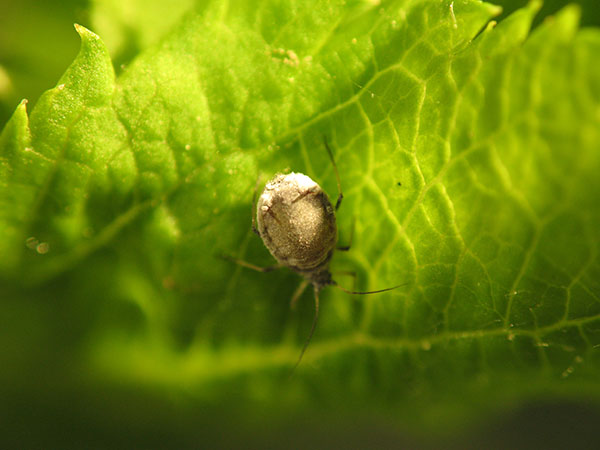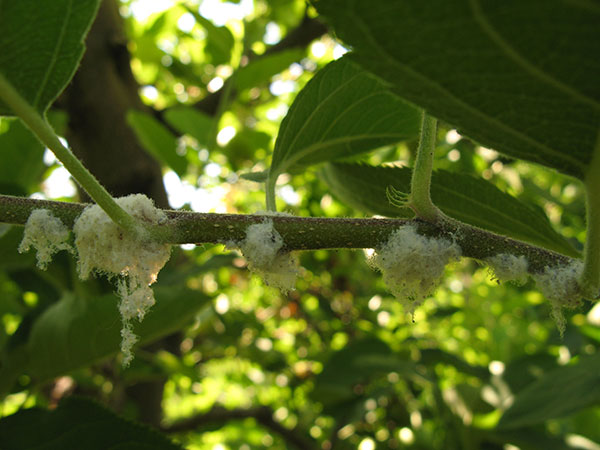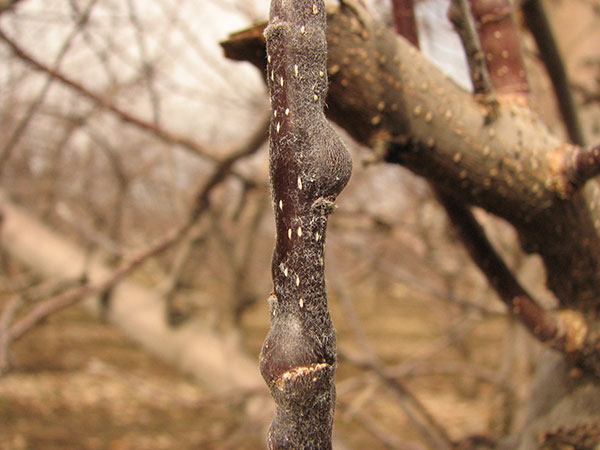Woolly Apple Aphid
HOSTS
- Apple
DESCRIPTION
The woolly apple aphid is native to North America and found throughout Utah. Adults and immature aphids are reddish-purple in color with a white, waxy covering. From a distance, a colony of woolly apple aphids appears as mass of cotton on the tree. This cottony mass is a result of long, white, filamentous, waxy secretions from the back of the adult aphids. This waxy mass protects the woolly aphid from insecticides, weather, and natural enemies. Without chemical or natural controls, woolly apple aphids can increase to high numbers in apple orchards.
BIOLOGY
These aphids overwinter primarily on the roots, but sometimes in cracks and crevices in the tree canopy. If the winter is mild, aphids that overwintered in the tree will start to reproduce and form cottony colonies in early to mid spring. Every year, a portion of aphids on the roots will migrate up to the tree to form additional feeding colonies. A harsh winter will kill above-ground aphids, and in those years, aphids are not noticed in trees until mid to late spring. As the aphids feed, galls form on the twigs or roots. Cottony colonies are visible by mid to late June.
SYMPTOMS
- Galls on roots and twigs that sometimes crack
- Loss of vigor due to heavy root feeding
- Cottony masses on twigs and wounds
- Honeydew
- Leaf drop
MONITORING
Start monitoring for cottony colonies in mid spring by checking root suckers and edges of pruning cuts and wounds.
GENERAL MANAGEMENT
Woolly apple aphids are controlled with broad-spectrum insecticides like carbaryl, malathion, or a pyrethroid applied when colonies are first noticeable in the tree canopy. In order to increase insecticide efficacy, add horticultural oil. Without oil, the insecticide has difficulty penetrating the waxy covering of the colony. Dormant oil sprays are not fully effective because most of the aphid population are on the roots during winter.
Insecticides:
- Residential: insecticidal soap, horticultural mineral oil, acetamiprid, azadirachtin, or malathion
- Commercial: Click Here
How to Manage Woolly Apple Aphids
Woolly Apple Research




